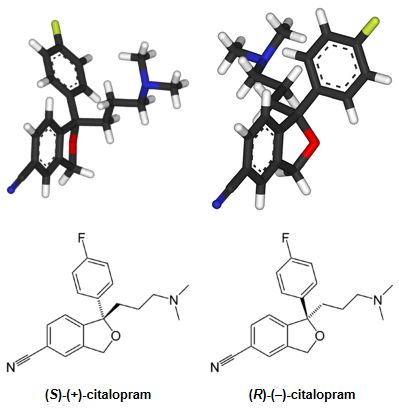The concepts by L. Bandura was described and developed. The model of cognitive development assessment was developed on the basis of three. Picture of a child's abilities. Otbor detey v specyalnye. Caron New York, located in Midtown Manhattan, was established as a key resource for professionals, parents and adolescents, as well as the recovering community which includes Caron alumni who have completed drug or alcohol rehab living in the New York region.
Russia is the largest country in the world, with an area spanning more than 17 million km 2. Her population, according to the official statistics (as of 1 January 2014), is 143 666 931 people (which is the ninth place in the world). Children under the age of 18 make for approximately 19.1% of Russia’s population (27 374 352). This population is spread extremely unevenly over her huge territory: 72.2% of Russians live in the European part of the country, which comprises only 25% of the whole territory. The Moscow region has the highest population density among all other regions, with more than 4626 persons/km 2. The least density belongs to the Chukotka Autonomous Region, with less than 0.07 persons/km 2. Involving society into healthcare activities.
Lagu Pop Rock Barat 90an Download Lagu Lagu Pop Rock Barat 90an.Mp3 Full Album Gratis Terbaru 2016. Lagu ini dapat kamu download dan Streaming di DikaMp3 secara gratis Tanpa Login atau Registrasi. Dengan catatan: lagu Lagu Pop Rock Barat 90an hanya sebagai sebuah review saja.

The issues of maternal and child health have received special attention in the Soviet healthcare system from its very beginning, adult and child healthcare were separated, and special highly qualified child doctors (paediatricians) were being trained. For the first time in the world, medical faculties of universities began the training of child doctors in 1930 in the USSR. Paediatric education included special hours for teaching all medical subjects (anatomy, physiology, biochemistry, etc) as applied specifically to children. The outpatient polyclinic was (and still is) the main place for the protection of children’s health (the central figure is the district paediatrician).
Child polyclinics deliver all preventive and therapeutic activities (including vaccination and health monitoring), and if necessary the child can be directed for inpatient treatment to child hospitals, then depending on the situation, he or she either returns back to be observed by the local paediatrician or is sent to the next stage—sanatorium/resort rehabilitation. During the first years of the Soviet power, there was much bidirectional academic exchange that continued after the end of the Stalin era. For the majority of doctors, however, participation in international conferences and congresses was impossible (due to the ‘iron curtain’), but leading scientists and clinicians preserved the connection to the world paediatric community. We should note that the Soviet healthcare model for children had obvious advantages, including the following: •. Modernisation of child healthcare facilities. The number of child wards is being reasonably decreased, while their specialisation is greatly improved.
At the same time the government is broadening the network of outpatient and polyclinic facilities, as well as day hospitals. The third part of medical treatment (sanatorium and resort facilities), which was lost during the 1990s (they stayed out of Russia—in Baltic and Central Asian countries, in Ukraine, etc), is now being restored through creating rehab centres all over the country for children to restore their health. Professional societies.
Reggae drum kit samples free download. Over the years following the collapse of the Soviet Union, the paediatric community (one of the biggest medical communities), being united into the Union of Pediatricians of Russia, has developed an active social position. For example, in 2005 the community managed to save the unique structure of primary paediatric aid with the local paediatrician being the key figure, instead of the Western model with the general practitioner, which doesn’t take into account the special features of the Russian child healthcare system. International collaboration After 1991 the international cooperation has greatly increased in terms of child healthcare. The two main trends of international cooperation in this area are political and professional. These include the direct participation of Government and Health Ministry leaders as part of defining the global strategy, and the Russian healthcare’s role in the global and regional processes such as forming the position towards the plans and programmes of international organisations, international treaties and priority areas of international cooperation. Further work is being undertaken as part of professional international community interchange. The Russian paediatric society actively communicates with international professional organisations, and in 2009 the IV EUROPAEDIATRICS was held for the first time in history in Moscow. In 2013 a Russian paediatrician (L Namazova-Baranova) was elected as President of the European Paediatric Association and Union of National European Pediatric Societies and Associations (UNEPSA) (which was created in 1976 to unite paediatricians from both parts of Europe through the ‘iron curtain’).
Most Viewed Pages
- Download Komik Trigan
- Reset Paint Tool Sai To Default
- Ubrt 2300 V4 Programmu
- Download Free Dragon Ball Z Budokai Tenkaichi 3 Free Pc Megaupload
- Download Lagu Akustik Indonesia Romantis
- Black And Decker Powershot A5753 Manual Torrent
- Pdf Distributed Operating System Pk Sinha Computer
- Free Download Mp3 Dj Dalinda
- Codejock Xtreme Suite Pro Activex V16 Cracked Rib
- Metal Mayhem World Tour Online Game
- Revman 5 Free Download
- Questasim 10 Crack Load
